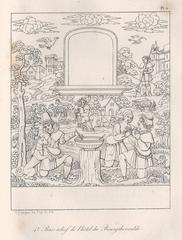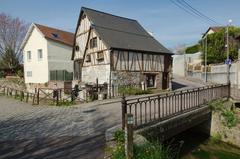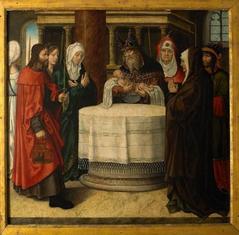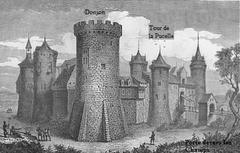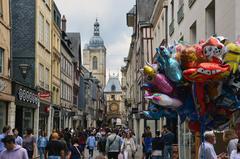
Place Saint-Vivien Rouen: Visiting Hours, Tickets, and Historical Guide
Date: 04/07/2025
Introduction
Nestled in the historic heart of Rouen, France, Place Saint-Vivien and the Église Saint-Vivien are enduring symbols of the city’s medieval heritage and vibrant community life. These sites present visitors with a unique window into Rouen’s evolution—from its medieval origins through waves of architectural innovation, religious significance, and social transformation. Whether you are captivated by Gothic and Flamboyant architecture, the artistry of centuries-old stained glass, or the neighborhood’s lively cultural scene, this comprehensive guide will enrich your visit with practical information and historical depth.
Drawing on authoritative sources such as Petit Futé, Patrimoine Histoire, and the Rouen Tourist Office, this guide provides updated visiting hours, ticket and accessibility information, travel tips, and suggested itineraries to help you explore the heart of Normandy’s cultural legacy.
Table of Contents
- Introduction
- Historical Overview
- Architectural Evolution and Styles
- Artistic Heritage and Interior Highlights
- Place Saint-Vivien: Community and Cultural Context
- Visitor Information
- Amenities and Services Nearby
- Events and Activities in Rouen
- Nearby Attractions and Itinerary Suggestions
- FAQ
- Conclusion
- References
Historical Overview
Origins and Early Development
The beginnings of Place Saint-Vivien are intimately linked to the Église Saint-Vivien, whose earliest iteration dates back to 1209 as a chapel just outside Rouen’s city walls. By 1230, it had become a parish church, mirroring Rouen’s urban growth in the High Middle Ages. The church’s connection to the Abbey of Saint-Ouen underscores its spiritual and communal importance; it once served as the abbatial church when the abbey was damaged by fire.
Medieval Expansion and Architectural Evolution
During the 14th and 15th centuries, the church underwent major transformation. Consecrated in 1358, the new structure featured two naves and a bell tower. Subsequent expansions in the 15th and early 16th centuries added further naves and chapels, reflecting the prosperity of Rouen’s textile industry and the support of its draper community.
Religious Turmoil and Revolutionary Upheaval
The Wars of Religion in the 16th century inflicted damage on the church, but it remained a spiritual center. During the French Revolution, the church was closed and repurposed as a saltpeter factory before being restored to religious use in the early 19th century.
19th-Century Restorations and Urban Renewal
The 19th century brought significant repairs, including restoration of the bell tower and the replacement of wooden vaults with brick, enhancing luminosity. Urban renewal also shaped Place Saint-Vivien, integrating it more fully into Rouen’s cityscape and creating an open forecourt.
Remnants of the historic Saint-Vivien fountain and the “tour” hatch for abandoned infants reflect the church’s longstanding charitable role. Inside, chapels feature 17th- and 18th-century altarpieces, while restored stained glass windows preserve the church’s artistic heritage.
Architectural Evolution and Styles
Medieval Foundations and Gothic Hallmarks
The Église Saint-Vivien exemplifies Rouen’s Rayonnant and Flamboyant Gothic architecture. The earliest parts, including the northern nave and bell tower, showcase the vertical lines and pointed arches of the Rayonnant style. The central rose window and northern windows display geometric tracery, while later additions reveal the ornate, flame-like motifs of the Flamboyant period (Petit Futé, Patrimoine Histoire).
Expansion and Adaptation
Economic revival after the Hundred Years’ War enabled the church’s expansion, with a third nave added in the 15th century and chapels in the 16th. The Chapel of the Sacred Heart, funded by Guillaume de Feugueray, and the Chapel of Saint Mathurin (now dedicated to Saint Vincent de Paul) highlight this period’s architectural and decorative diversity.
To address reduced interior light caused by adjacent buildings, the choir and central nave were raised—a unique feature that lasted into the 19th century. The church’s lack of a transept further distinguishes its layout (Patrimoine Histoire).
Restoration and Modern Interventions
Major restoration in the 19th century included rebuilding vaults and renovating the bell tower. After a fire in 1935, the roof was reconstructed in concrete—a rare modern intervention. Restoration efforts also uncovered original painted decorations beneath later plaster (Petit Futé).
Artistic Heritage and Interior Highlights
Stained Glass: Loss, Renewal, and Restoration
While Renaissance glass was lost, Église Saint-Vivien is renowned for its 19th-century stained glass. Crafted by local and Parisian workshops, these windows depict scenes from Saint John the Baptist’s life, episodes from the life of Jesus, and the story of Saint Vivien. The Saint Vivien window, damaged in World War II, was meticulously restored in the 1980s (Patrimoine Histoire).
A unique four-lancet window replicates paintings donated by Auguste Dutuit, blending painting and stained glass traditions.
Painted and Sculpted Decoration
The northern nave features painted 14th-century wooden vaults, with scenes of angels and Christograms. Sculptural highlights include a 15th-century Pietà and consecration crosses symbolizing the Evangelists. The choir’s Baroque altarpiece, “The Agony of Jesus” by Millet-Desruisseaux, displays dramatic 17th-century artistry (Patrimoine Histoire).
Place Saint-Vivien: Community and Cultural Context
Social Role and Neighborhood Identity
Place Saint-Vivien continues to serve as a social and cultural hub. The CCAS (Centre Communal d’Action Sociale) provides essential services for seniors, families, and vulnerable populations (rouen.fr). Cultural programming, often in partnership with the Musée national de l’Éducation, includes family workshops, clay modeling, and stained glass ateliers (gralon.net).
The district is home to a diverse community—longtime residents, students, and families—fostering an inclusive urban identity.
Integration with Rouen’s Historic Core
Place Saint-Vivien is within walking distance of Rouen Cathedral, the Gros Horloge, and Rue du Gros-Horloge (intrepidscout.com). The medieval streets, half-timbered houses, and local markets enhance its charm and accessibility.
Visitor Information
Opening Hours and Tickets
- Église Saint-Vivien: Typically open Thursday to Sunday, 10:00 AM to 6:00 PM. Hours may vary on holidays; check official listings (Mérimée database).
- Place Saint-Vivien: Open year-round, 24/7; no entrance fee.
- Admission: Free; donations are welcome.
Accessibility
- Church: Main entrance and nave are accessible, though some areas have steps or uneven floors.
- Square: Designed for accessibility, with adapted services and public transport nearby.
- Parking: Paid and free options available; over 500 spaces for reduced mobility (Visiterouen.com).
Guided Tours
Guided tours are available through local tourist offices and during special events. Self-guided and audio tours may also be offered (Rouen Tourist Office).
Photography
Photography is permitted inside the church (no flash); the stained glass and vaulted ceilings are popular subjects.
Travel Tips
- Best Times: Early mornings and weekdays are quieter.
- Public Transport: Rouen’s Astuce network provides efficient service; free on Saturdays.
- Cycling: Bike rentals available throughout the city.
Amenities and Services Nearby
- Food and Drink: Cafés, bakeries, and restaurants are within a short walk, with a range of options from casual to fine dining (Normandie Tourisme).
- Markets: Place Saint-Marc market and Marché des Saveurs offer local produce and specialties.
- Public Restrooms: Found at major squares and parks.
- Wi-Fi: Free public Wi-Fi is available in central Rouen.
Events and Activities in Rouen
- Fêtes Médiévales de Rouen: Early July medieval festival with markets, parades, and concerts (Normandie Lovers).
- Light Shows: Summer illumination at Rouen Cathedral.
- Concerts and Markets: Regular cultural events and open-air concerts throughout the summer (Visiterouen.com).
Nearby Attractions and Itinerary Suggestions
- Rouen Cathedral: Masterpiece of Gothic architecture, a must-visit landmark.
- Abbey of Saint-Ouen: Grand abbey historically connected to Saint-Vivien.
- Church of Saint-Maclou: Renowned for its Flamboyant Gothic style.
- Musée des Beaux-Arts de Rouen: Impressive art collections.
- Joan of Arc Museum: Immersive historical experience.
Combine your visit to Saint-Vivien with these sites for a full day exploring Rouen’s heritage.
Frequently Asked Questions (FAQ)
What are the visiting hours for Église Saint-Vivien?
Typically Thursday–Sunday, 10:00 AM–6:00 PM. Confirm locally for updates.
Is there an entrance fee?
No; entry is free. Donations are appreciated.
Are guided tours available?
Yes, via local tourist offices and during special events.
How accessible is the church for visitors with reduced mobility?
The main nave is accessible; some areas may have steps. Assistance is available.
Can I take photos inside the church?
Yes, non-flash photography is permitted.
Visuals and Interactive Resources
Conclusion
Place Saint-Vivien and Église Saint-Vivien are cornerstones of Rouen’s historical, architectural, and community identity. Their layered past—from medieval chapel and Gothic grandeur to modern social hub—offers visitors a unique and immersive experience. With free entry, accessible amenities, and proximity to Rouen’s major landmarks, these sites are essential stops for any itinerary.
For the latest updates on hours, events, and visitor services, consult the Rouen Tourist Office or download the Audiala app for curated itineraries and expert tips. Embrace the opportunity to discover Rouen’s rich heritage where past and present converge.
References
- Petit Futé – Église Saint-Vivien
- Patrimoine Histoire – Rouen Saint-Vivien
- Rouen Tourist Office
- Rouen CCAS
- Monumentum – Église Saint-Vivien
- Visiterouen.com – Parking
- Normandie Tourisme – Rouen
- Normandie Lovers – July Weather
- Vitrines Rouen – Fêtes Médiévales
- Just Gone Wandering – Rouen Itinerary
- Gralon.net – Centre Social Saint-Vivien
- Intrepid Scout – Rouen Tips

